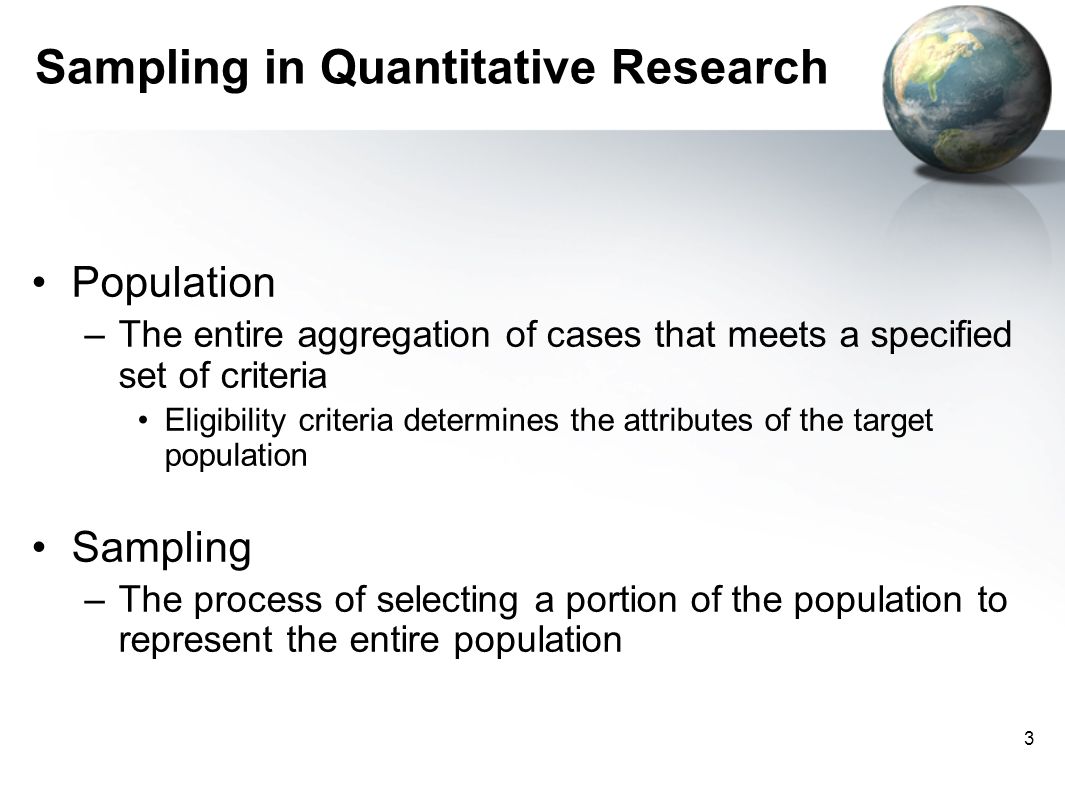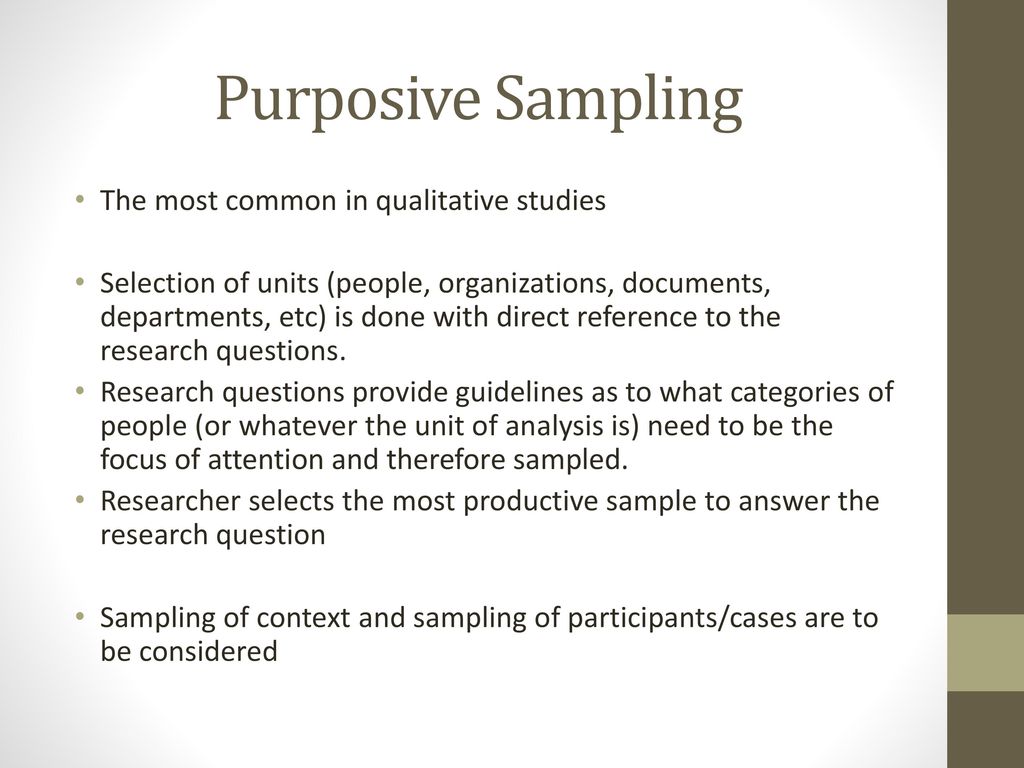Describe the Main Sampling Techniques Used in Qualitative Research
This will not be achieved through superficial knowledge about a large representative sample of individuals. In this section we briefly describe three of the most common sampling methods used in qualitative research.

1 Summary Of Benefits And Limitations Of Main Qualitative Data Download Table
Learn vocabulary terms and more with flashcards games and other study tools.

. Probability sampling methods 1. In probability Samples each member of the population has a known non-zero probability of being selected. Purposive sampling quota sampling and snowball sampling.
It is a reliable method of obtaining information where every single member of a population is chosen randomly merely by chance. Probability sampling techniques use random selection to help you select units from your sampling frame to be included in your sample. How does a researcher know when they have enough data when using each methodology.
These procedures are very clearly defined making it easy to follow them. One of the best probability sampling techniques that helps in saving time and resources is the Simple Random Sampling method. Describe the differences in sampling techniques used in quantitative versus qualitative research.
Pre-selected criteria related to research hypothesis determines the participants for research for example a study on cancer rates for individuals who live near a nuclear power station. Identify and describe a minimum of two types of sampling techniques used in qualitative research. When qualitative perspectives are sought as part of clinical or survey studies the purposive quota or case study sampling techniques are generally the most useful.
In this case a researcher might know of one or two people shed like to include in her study but then relies on those initial participants to help. Qualitative researchers sometimes rely on snowball sampling A nonprobability sample type for which a researcher recruits study participants by asking prior participants to refer others. Also known as purposive and selective sampling purposeful sampling is a sampling technique that qualitative researchers use to recruit participants who can provide in-depth and detailed information about the phenomenon under investigation.
Convenience sampling is samples of participants that were convenient for the researcher to recruit. How do you collect qualitative and quantitative data. There are four types of probability sampling techniques.
In this section we briefly describe three of the most common sampling methods used in qualitative research. Common qualitative sampling methods are convenience also called volunteer sampling snowball purposive and theoretical sampling. Sampling for Qualitative Research The aim of the qualitative research is to understand from within the subjective reality of the study participants.
In a simple random sample every member of the population has an equal chance of being. Purposive sampling quota sampling and snowball sampling. The researcher establishes participant quotas before forming a sample.
Examples of qualitative data collection methods include focus groups observation written records and. What is snowball sampling in qualitative research. Qualitative research is the opposite of quantitative research which involves collecting and.
Purposive sampling quota sampling and snowball sampling. Systematic Sampling Rather than randomly select individuals within a population this method systematically samples by selecting participants. The explanations below are meant to help you understand the reasons for using each method.
There are three main types of qualitative sampling. Systematic sampling is similar to simple random sampling but it is usually slightly easier to. There is seldom a simple answer to the question of sample or cell size in qualitative research.
It is highly subjective and determined by the qualitative researcher generating the qualifying criteria each participant. Researchers and recruiters rely on four types of commonly used techniques including. The appropriate population and for collecting required data from the sample.
Although there are several different purposeful sampling strategies criterion sampling appears to be used most commonly in implementation research. Uses broad research questions does not have variables or a hypthesis. How many subjects is the perennial question.
The non random sampling techniques used in qualitative studies are classified below. Qualitative researchers may use more than one sampling approach in their study. Sampling in Qualitative Research In this section we briefly describe three of the most common sampling methods used in qualitative research.
In snowball sampling a researcher identifies one or two people they would like to include in their study but then relies on those initial participants to help identify additional study participants. Systematic Sampling Simple Random Sampling Stratified Sampling and Cluster Sampling. Purposeful sampling is widely used in qualitative research for the identification and selection of information-rich cases related to the phenomenon of interest.
SAMPLING FOR QUALITATIVE RESEARCH The aim of the qualitative research is to understand from within the subjective reality of the study participants. Techniques to identify study participants. Purposive sampling quota sampling and snowball sampling.
This section we briefly describe three of the most common sampling methods used in qualitative research. Rather we want to reach people within the study area who can share their. Qualitative research involves collecting and analyzing non-numerical data eg text video or audio to understand concepts opinions or experiences.
Two techniques that are used in qualitative research is purposefulsamplingand convenience sampling. Rather we want to reach people within the study area. When are qualitative methods used.
As data collectors you will not be responsible for selecting the sampling method. The four main types of sampling used in qualitative research are convenience sampling. Describe the differences in sampling techniques.
It can be used to gather in-depth insights into a problem or generate new ideas for research. This will not be achieved through superficial knowledge about a large representative sample of individuals. Sampling in Qualitative Research.
Qualitative researchers can also use snowball sampling techniques to identify study participants. Start studying Research SamplingQualitative Research.

Pdf Sampling Issues In Qualitative Research

Sampling For Qualitative Research Blogs Baruch

Sampling In Qualitative Research Definition Sampling Is The

Sampling Methods In Quantitative And Qualitative Research Ppt Video Online Download

Sampling For Qualitative Research Ppt Download

A Range Ol Random And Non Random Sampling Methods Download Table

Pdf Purposive Sampling In A Qualitative Evidence Synthesis A Worked Example From A Synthesis On Parental Perceptions Of Vaccination Communication

Comments
Post a Comment